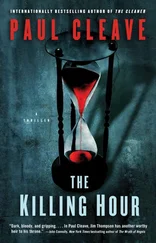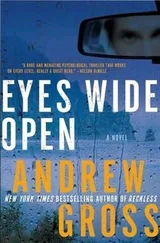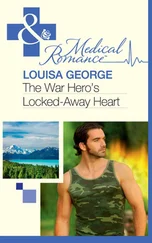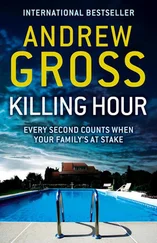
Lisa Gardner
The killing hour
A little bit of research went into the making of this novel. In the absolutely, highly recommended, great-way-to-spend-a-weekend department, I was privileged to once again visit the FBI Academy and learn more about life amid an active Marine base. I have done my best to re-create the facilities and culture of the Academy. In regard to some of the anecdotes and traditions, however, buyer beware. The Academy is a living, breathing institution, undergoing constant change depending on the year, the class, and Bureau needs. As fast as one agent told me a story of a hallowed tradition during his Academy days, another agent would confess he’d never heard of such a thing. Being a crafty writer, I sifted through the various anecdotes, selected the ones I liked best and delivered them here as the gospel truth. That’s my story and I’m sticking to it.
As much as I enjoy interviewing FBI agents, I confess I was totally blown away by the nice men and women I met via the U.S. Geological Survey team of Richmond, Virginia. I needed some experts on the great outdoors and boy, did I hit the mother lode. Not only were the team members very patient when explaining to me the intricacies of properly analyzing water samples, but they came up with a dynamite list of cool places to kill people. They also gave my husband and me a personal tour of their recommended crime scenes, which had us on good behavior for weeks.
Following is the rather extensive list of nice folks who took time away from their very busy lives just to answer my phone calls. These people gave me correct information with the best of intentions. What happened to it after that is entirely my fault.
FIRST, THE EARTH EXPERTS:
Jim Campbell, Subdistrict Chief, U.S. Geological Survey
David Nelms, Hydrologist, U.S. Geological Survey
George E. Harlow, Jr., P.G., Hydrologist, U.S. Geological Survey
Randall C. Orndorff, Geologist, U.S. Geological Survey
William C. Burton, Geologist, U.S. Geological Survey
Wil Orndorff, Karst Protection Coordinator, Virginia Department of Conservation and Recreation
Wendy Cass, Park Botanist, Shenandoah National Park
Ron Litwin, Palynologist, U.S. Geological Survey
SECOND, THE DRUG EXPERTS:
Margaret Charpentier
Celia MacDonnell
THIRD, THE PROCEDURE EXPERTS:
Special Agent Nidia Gamba, FBI, New York
Dr. Gregory K. Moffatt, Ph.D., Professor of Psychology, Atlanta Christian College
Jimmy Davis, Chief of Police, Snell Police Department, GA
FOURTH, THE SUPPORTING CAST:
Melinda Carr, Diana Chadwick, Barbara Ruddy, and Kathleen Walsh for their invaluable proofreading assistance
My husband, Anthony, who didn’t have to make any chocolate this time, but was required to unpack an entire house while I tended to deadline. Love, let’s never move again.
Also, my deepest thanks to Kathy Sampson, who generously bought her daughter, Alissa Sampson, a “cameo” appearance in this novel as part of a charity auction. I’m never sure if it’s a good thing to be a character in one of my novels, but I appreciate Kathy’s donation and hope Alissa enjoys the book.
And finally, in loving memory of my grandmother, Harriette Baumgartner, who supplied me with my favorite paperbacks, baked the best chocolate chip cookies in the world, and taught us all a dozen different ways to play solitaire. Here’s to you, Grandma.
Happy reading,
Lisa Gardner
THE MAN FIRST STARTED NOTICING IT IN 1998. Two girls went out to a bar, never came home again. Deanna Wilson and Marlene Mason were the first set. Roommates at Georgia State U, nice girls by all accounts, their disappearance didn’t even make the front pages of the Atlanta Journal-Constitution . People disappear. Especially in a big city.
Then, of course, the police found Marlene Mason’s body along Interstate 75. That got things going a bit. The fine folks of Atlanta didn’t like one of their daughters being found sprawled along an interstate. Especially a white girl from a good family. Things like that shouldn’t happen around here.
Besides, the Mason case was a head-scratcher. The girl was found fully clothed and with her purse intact. No sign of sexual assault, no sign of robbery. In fact, her corpse looked so damn peaceful, the passing motorist who found her thought she was sleeping. But Mason was DOA. Drug overdose, ruled the ME (though Mason’s parents vehemently denied their daughter would do such a thing). Now where was her roommate?
That was an ugly week in Atlanta. Everyone looking for a missing college coed while the mercury climbed to nearly a hundred degrees. Efforts started strong, then petered out. People got hot, got tired, got busy with other things. Besides, half the state figured Wilson had done it-offed her roommate in some dispute, probably over a boy, and that was that. People watched Law amp; Order . They knew these things.
A couple of hikers found Wilson ’s body in the fall. It was all the way up in the Tallulah Gorge, nearly a hundred miles away. The body was still clad in Wilson ’s party clothes, right down to her three-inch heels. Not so peaceful in death this time, however. For one thing, the scavengers had gotten to her first. For another, her skull was shattered into little bits. Probably from taking a header down one of the granite cliffs. Let’s just say Mother Nature had no respect for Manolo Blahnik stilettos.
Another head-scratcher. When had Wilson died? Where had she been between that time and first vanishing from a downtown Atlanta bar? And had she offed her roommate first? Wilson ’s purse was recovered from the gorge. No sign of any drugs. But strangely enough, neither was there any sign of her vehicle or her car keys.
The Rabun County Sheriff’s Office inherited that corpse, and the case once again faded from the news.
The man clipped a few articles. He didn’t really know why. He just did.
In 1999, it happened again. Heat wave hit, temperatures-and tempers-went soaring, and two young girls went out to a bar one night and never made it back. Kasey Cooper and Josie Anders from Macon, Georgia. Maybe not such nice girls this time. Both were underage and never should’ve been drinking except that Anders’s boyfriend was a bouncer at the bar. He claimed they weren’t “hardly tipsy at all” when he last saw them climbing into Cooper’s white Honda Civic. Their distraught families claimed that both girls were track-and-field stars and wouldn’t have gone anywhere without a fight.
People got a little more nervous this time. Wondered what was going on. Two days later, they didn’t have to wonder anymore. Josie Anders’s body was found along U.S. 441-ten miles from the Tallulah Gorge.
The Rabun County Sheriff’s Office went into hyperdrive. Rescue teams were organized, search dogs hired, the National Guard called in. The Atlanta Journal-Constitution gave it front-page coverage. The strange double-disappearance so like the one the summer before. And exactly what happened when a person went missing in this kind of heat.
The man noticed something he’d missed before. It was small, really. A minor little note under letters to the editor. It read: “Clock ticking… planet dying… animals weeping… rivers screaming. Can’t you hear it? Heat kills…”
Then the man knew why he’d started the scrapbook.
They never did find Kasey Cooper in the gorge. Her body didn’t turn up until the November cotton harvest in Burke County. Then, three men operating a cotton picker got the surprise of their lives-a dead girl right smack in the middle of thousands of acres of cotton fields, still wearing a little black dress.
Читать дальше













